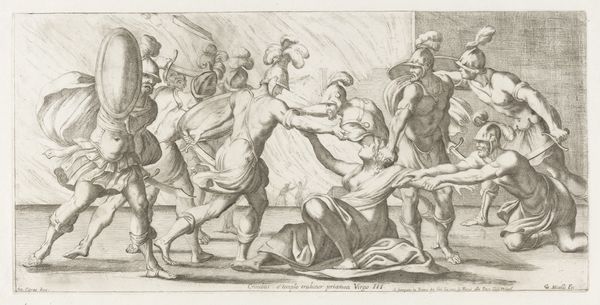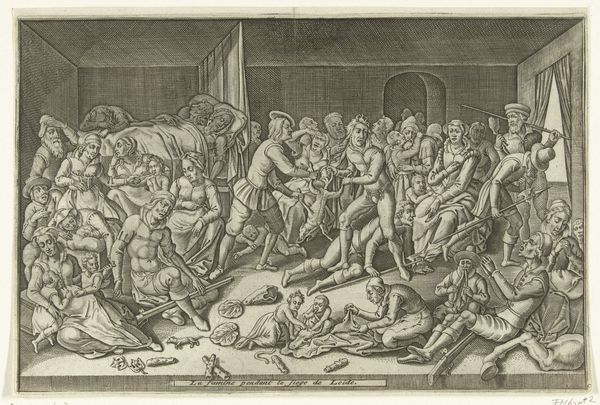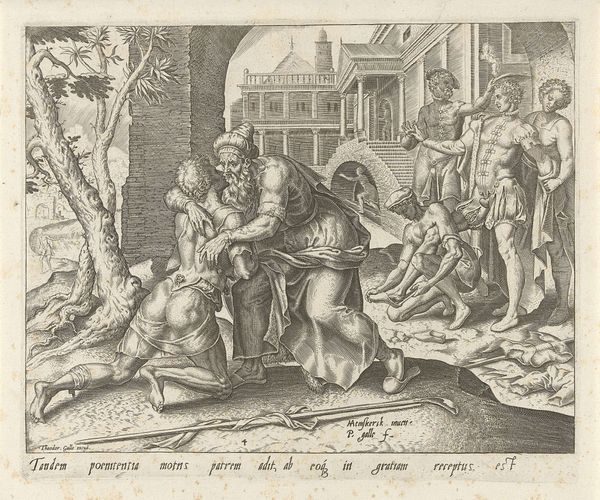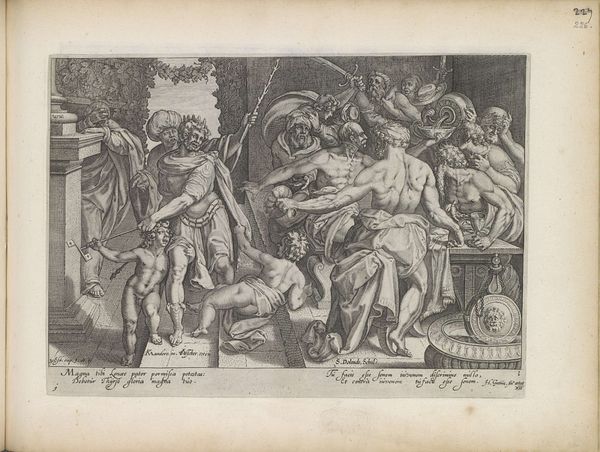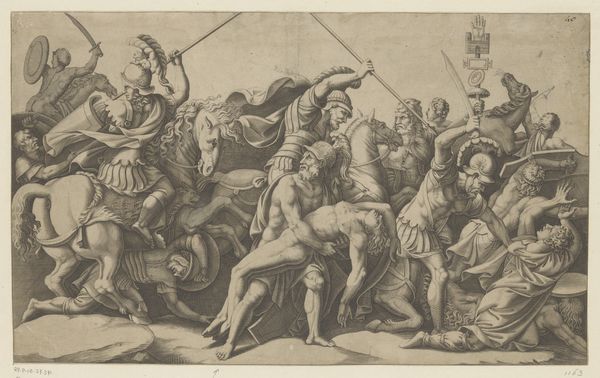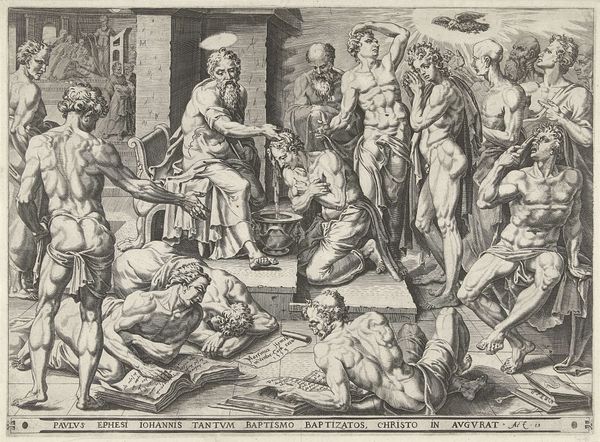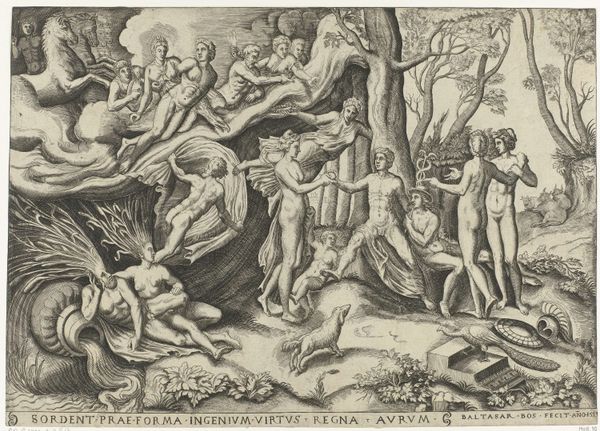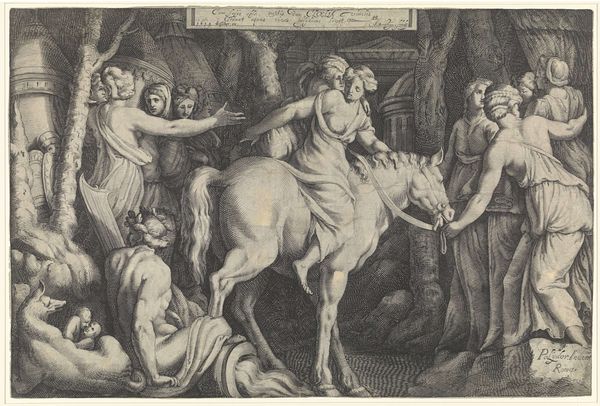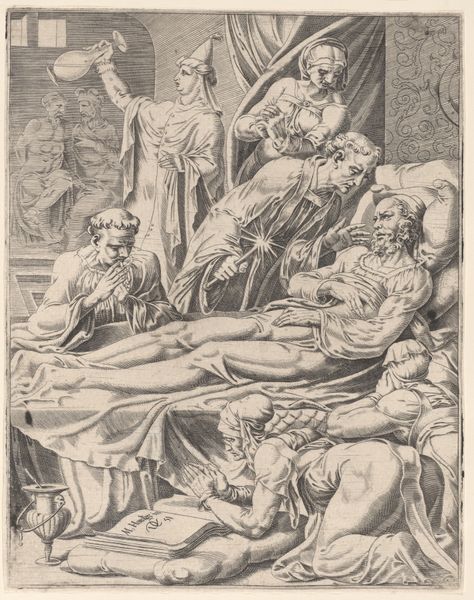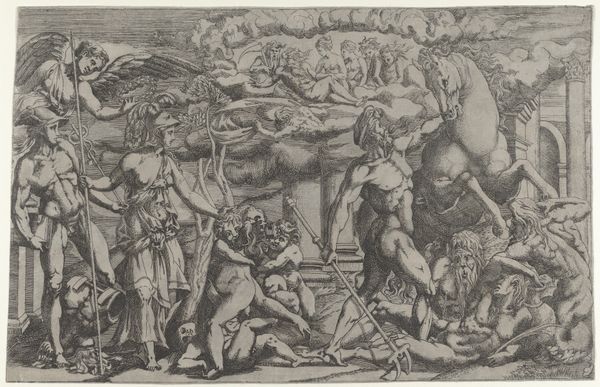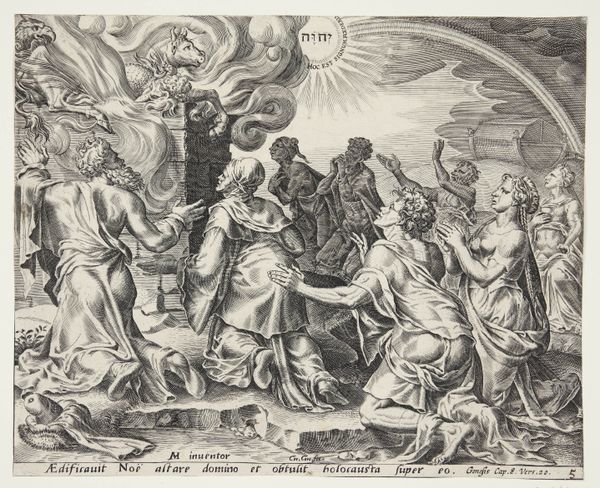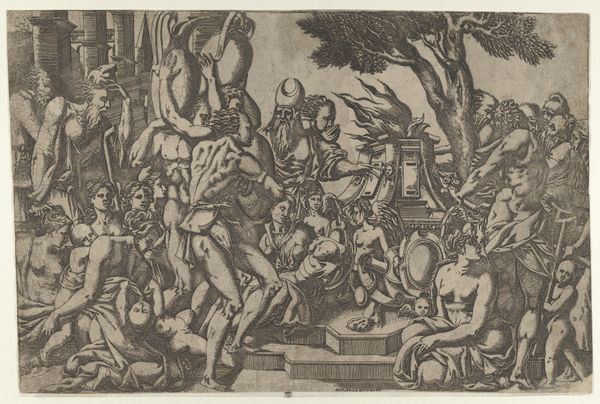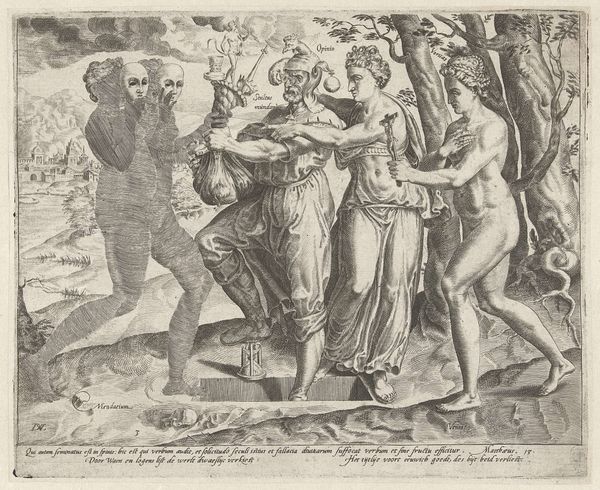
print, engraving
#
narrative-art
#
baroque
# print
#
figuration
#
history-painting
#
engraving
Dimensions: height 355 mm, width 370 mm
Copyright: Rijks Museum: Open Domain
Curator: We're looking at "The Four Evangelists with Their Symbols," an engraving produced between 1589 and 1626 by Bartholomeus Willemsz. Dolendo. It’s part of the Rijksmuseum's collection. Editor: My immediate impression is how crowded the composition feels. The figures and symbols are so tightly packed, almost claustrophobic. It’s dark too. Curator: It's characteristic of the Baroque style to embrace dynamism and intense emotion. Dolendo depicts the Evangelists—Matthew, Mark, Luke, and John—accompanied by their traditional symbols: the angel, the lion, the ox, and the eagle, respectively. This was a key visual motif to communicate Biblical stories. Editor: The inclusion of these figures does add symbolic weight. These symbols also come from interpretations and traditions embedded within very specific historical and theological contexts, reflecting both power and potential exclusion. Are these symbols still relevant in engaging audiences with a contemporary, perhaps skeptical, lens? Curator: Absolutely. Art in this period aimed to teach and inspire. Prints like these were distributed widely, conveying religious narratives to a broad audience in a society undergoing significant social and religious upheaval. Note, too, how the text printed below reinforces these lessons and identifies the chapters they illuminate. Editor: I’m also struck by how the figures are all writing or deep in thought, but without any sort of overt inspiration from those divine figures perched nearby. It speaks to the intense intellectual labor and translation work these texts demand, perhaps a very grounded understanding of faith and dissemination. Curator: Indeed. While each Evangelist is depicted with his corresponding symbol, there is an intense focus on human intellect. We must consider these works within the political climate, to be sure, but also in the rise of humanist values across Europe. Editor: Looking at it today, I see a reflection of the constant interpretation and re-interpretation inherent in any foundational text—and in the images and symbols these men are carefully capturing for their time. Curator: An interesting point to consider how this engraving offers insight not only into its own era, but into the ever evolving nature of historical and religious narrative.
Comments
No comments
Be the first to comment and join the conversation on the ultimate creative platform.

